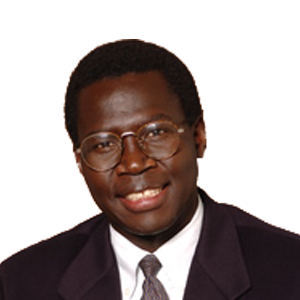
Elias Towe
Grobstein Professor, Materials Science and Engineering
Professor, Electrical and Computer Engineering
- Roberts Engineering Hall 147
5000 Forbes Avenue
Pittsburgh, PA 15213
Bio
Elias Towe was educated at the Massachusetts Institute of Technology, where he received the S.B., S.M., and Ph.D. degrees from the Department of Electrical Engineering and Computer Science, where he was also a Vinton Hayes Fellow. Prior to joining the faculty at Carnegie Mellon in 2001, he was, at the same time, a Professor of Electrical and Computer Engineering at the University of Virginia, and a Program Manager at the Defense Advanced Research Projects Agency. Towe is a recipient of several awards and honors. He is currently a professor of Electrical and Computer Engineering, and Materials Science and Engineering.Education
- PhD, 1987, Massachusetts Institute of Technology
- SM, 1981, Massachusetts Institute of Technology
- SB, 1981, Massachusetts Institute of Technology
Research
Towe's research focuses on photonics, optical networks, biophotonics, sensors and quantum phenomena in optical materials.Projects
Towe's group pursues research in basic optical and quantum phenomena in materials for applications in novel photonic devices that enable a new generation of information processing systems for communication, computation, and sensing. The group is also interested in understanding new pathways and fundamental mechanisms for solar energy conversion devices. Current focus is on the use of phenomena (such as three-dimensional quantum-confinement effects in nanometer-scale structures) in the study of novel devices. Examples include: quantum-dot infrared detectors and imaging sensors, electrically-pumped photonic crystal micro-cavity lasers with quantum-dot active regions, multi-spectral solar energy conversion devices, plasmonic bio-sensors, and fluorescence bio-sensing devices.Publications
“Size, shape, composition, and electronic properties of InAs/GaAs quantum dots by scanning tunneling microscopy and spectroscopy,” S. Gaan, G. He, R.M. Feenstra, J Walker, and E. Towe, J. Appl. Phys. 108, 114315 (2010).
“On ternary nitride substrates for visible semiconductor light-emitters,” T. K. Sharma and E. Towe, Appl. Phys. Lett. 96, 191105 (2010).
“Electronics states of InAs/GaAs quantum dots by scanning tunneling spectroscopy,” S. Gaan, Guowei He, R.M. Feenstra, J. Walker, and E. Towe, Appl. Phys. Lett., 97 123110 (2010).
“Application-oriented nitride substrates: The key to long-wavelength nitride lasers beyond 500 nm,” T. K. Sharma and E. Towe, J. Appl. Phys. 107 024516 (2010).
“A method for evaluating the ground state excitonic band gaps of strained InxGa1−xN/GaN quantum wells,” T. K. Sharma and E. Towe , J. Appl. Phys. 106 104509 (2009).